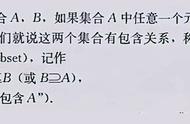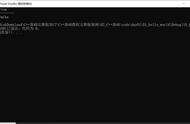1、并列句的概述:由并列连词把两个或两个以上的简单句连在一起的句子叫并列句;不同的并列连词表示并列分句之间的不同关系;
2、并列句的四种类型:
2.1、表示联合关系的并列句:
2.1.1、常用的连词有"and, when, not only…but also…, neither…nor…"等;
例如:I bought a bag for my little sister and she liked it very much.我给我妹妹买了一个包,并且她很喜欢。
I not only heard it, but also saw it. 我不仅听到了,我还看到了。
2.1.2、注意事项:"when"作这种用法时,主要用于以下结构,表示“当某人或某物正在或正要做某事,就在这时突然又发生了另一事”;
①sb. was/were doing sth. when sb. did sth.(过去进行时 一般过去时)
②sb. was/were about to do sth. when sb. did sth.(一般过去将来时 一般过去时)
③sb. was/were on the point of doing sth. when sb. did sth.(一般过去将来时 一般过去时)
例如:I was thinking of something, when I heard my name called.我正想着事情,突然我听到有人喊我的名字
I was about to go to bed, when the telephone rang.我正要上床睡觉,突然电话响了起来。
I was on the point of falling asleep, when the telephone rang.我刚要入睡,突然电话响了起来。
2.2、表示转折关系的并列句:
2.2.1、常用的连词有"but, while, yet(可是), still(仍然), however(然而)"等;
例如:I bought a bag for my little sister but she didn't like it.我给我妹妹买了一个包,但是她并不喜欢。
I'm good at math while my little sister is good at English.我擅长数学,而我妹妹擅长英语。
2.2.2、注意事项:
①"but/while"不与"although"连用,但"yet/still"可与"although"连用:
例如:Although she didn't feel well, she still went to work.尽管她感觉不舒服,但她还是去上班了。
②"however"引导并列句时,要用分号将它与前面的简单句隔开;另外它可以放在句首、句中和句尾,并且要用逗号将它与其前后的句子成分隔开;
例如:We tried our best; however, we lost the game. 我们尽力了;然而我们还是输了比赛。
We tried our best; we lost the game, however. 我们尽力了;然而我们还是输了比赛。
We tried our best; in the end, however, we lost the game.我们尽力了;然而最后我们还是输了比赛。
2.3、表示因果关系的并列句:
2.3.1、常用的连词有"for(因为)和so(所以、因此)"等;
例如:I'm very full for I have had too much rice.我很饱了,因为我已经吃了太多的米饭了。
I have had too much rice, so I'm very full. 我已经吃了太多的米饭了,所以我很饱。
2.3.2、注意事项:"so"不与"because"连用;另外"because"不是并列连词,而是从属连词,即它不引导并列句,而是引导原因状语从句;
2.4、表示选择关系的并列句:
2.4.1、常用的连词有"or, otherwise, or else(否则 ), either… or…(不是……就是)"等;
例如:Hurry up, or you'll be late for school. 快点,不然你上学就迟到了。
You must go early, otherwise you will miss the bus.你必须早点儿出发,否则你会错过公交车的。














